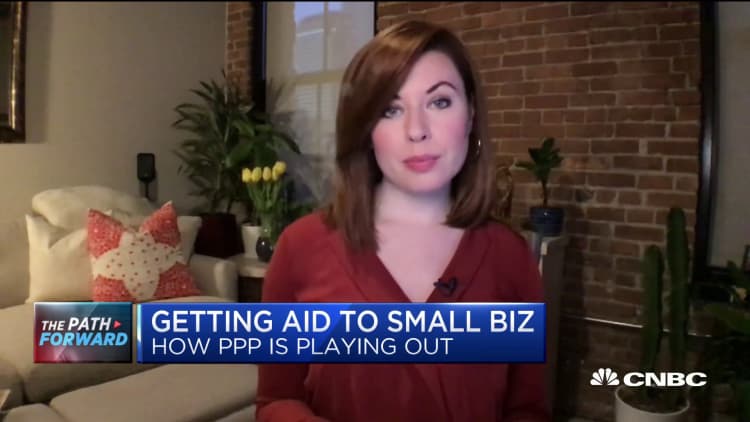Self-employed people who borrowed from the Paycheck Protection Program may have a tough time getting the full balance forgiven.
The PPP is a federal forgivable loan program that was established by the CARES Act. It's intended to cover up to eight weeks of wages, mortgage interest and other expenses for business disruptions during the coronavirus pandemic.
The loan is supposed to be forgivable if at least 75% of the proceeds are used to cover payroll, according to the Small Business Administration. No more than 25% can be used for other items.
Borrowers have two years to repay any amounts that aren't forgiven, at an interest rate of 1%.

Though the Treasury Department and the SBA released an application for forgiveness last week, additional guidance has yet to arrive.
Currently, the provisions for forgiveness are less generous for entrepreneurs who don't have employees.
For example, the amounts these individuals pay toward retirement and health-care benefits aren't counted toward forgivable payroll costs — only the amount they pay themselves.
"It seems like self-employed people won't get credit for anything other than salary," said Greg Zbylut, a tax attorney at Breyer Andrew in Burbank, California. "We still have some people who haven't applied for the PPP loan for these very reasons."
Expenses that may not be forgiven
Generally, the amount a business can borrow through the PPP is based on a firm's payroll, including health-care and retirement plan contributions.
It's a little different for independent contractors and self-employed people. They often run their business income through a checking account; they don't have a payroll.
In turn, the maximum amount of forgiveness these individuals will receive for paying themselves is the lesser of eight weeks of their 2019 net profit, which is spelled out on Schedule C of last year's income tax return, or a maximum of $15,385, according to an April 20 interim final rule from the SBA.
As it currently stands, retirement plan contributions and health-care premiums are not eligible for forgiveness as part of payroll if you're self-employed, according to the rule.

Further, the 75/25 guideline fails to consider self-employed people in areas with high rents, said Katie Vlietstra, vice president for government relations at the National Association for the Self-Employed.
"Rent and mortgage far exceed 25% of costs for locations in cities," she said. "They have low payroll and high overhead expenses."
The SBA anticipated that primary costs for self-employed people would be paying themselves, according to its April 20 interim final rule.
"Many self-employed individuals have few of the overhead expenses that qualify for forgiveness under the Act," the SBA said.
"For example, many such individuals operate out of either their homes, vehicles or sheds and thus do not incur qualifying mortgage interest, rent or utility payments," the agency said. "As a result, most of their receipts will constitute net income."
Evaluating options
The forgiveness application doesn't address any of these pending issues, but lawmakers are hoping to attack some of these problems with newly proposed legislation.
Reps. Chip Roy, R-Texas, and Dean Phillips, D-Minn., are proposing a bill that would give borrowers up to 24 weeks to use the PPP proceeds and lift restrictions that cap non-payroll expenses at 25%.
In the meantime, self-employed people are encouraged to borrow wisely from the PPP, keep the money in a separate bank account and continue to carefully document how the funds are used.
More from Smart Tax Planning:
Firms that took a PPP loan under $2 million get a break
Tax return filings crater as Americans hold off until July 15
The HEROES Act may allow you to undo this retirement withdrawal
"Even before the forgiveness application came out, we were foreseeing these issues with Schedule C applicants," said Dawn Minotas, CPA and managing director in the outsourced managed services and consulting group at Marcum LLP in Mayfield Village, Ohio.
"Don't apply for the maximum amount you're eligible for; apply for what you feel you need," she said.
The fact that forgiveness is still so murky is causing entrepreneurs to pause before they apply.
"With all of these changes to the PPP, the cage-rattling with certifying the need?" said Zbylut. "That scared a lot of people off.
"I think for the self-employed people, they got a bit of a raw deal, not being able to include health insurance or pensions," he added. "We still need more clarification on this."





